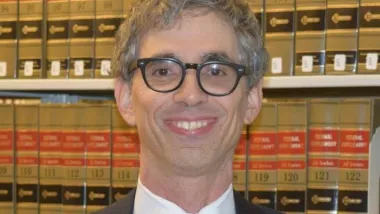Today, I turned in my grades for my seminar on "Sprawl and the Law." It occurred to me that some readers of this blog might be academics, and might be interested on how one can teach a course on sprawl. I began by defining the issue. As I pointed out in an earlier post (at http://www.planetizen.com/node/31063) the term "sprawl" has two common meanings: where we grow (city or suburb) and how we grow (pedestrian-friendly or automobile-dependent). Policies that affect the first type of "sprawl" need not affect the second (and vice versa).
Today, I turned in my grades for my seminar on "Sprawl and the Law." It occurred to me that some readers of this blog might be academics, and might be interested on how one can teach a course on sprawl.
I began by defining the issue. As I pointed out in an earlier post (at http://www.planetizen.com/node/31063) the term "sprawl" has two common meanings: where we grow (city or suburb) and how we grow (pedestrian-friendly or automobile-dependent). Policies that affect the first type of "sprawl" need not affect the second (and vice versa).
Then we discussed the question frequently debated on Planetizen: is sprawl good or bad? I used Oliver Gillham's book, The Limitless City, as a text, since Gillham addresses both sides of the argument. We discussed sprawl's impact on social equity, air pollution, traffic congestion, and a variety of other matters. Because my courses focus on legal issues, I limited our discussion of the pros and cons of sprawl to one class. However, urban planning instructors might wish to devote more time to the question.
But because I teach in a law school, I focused on legal rules relevant to sprawl. I began by focusing on the "how we grow" element of sprawl; since Jacksonville (where I live and teach) is a growing but highly car-dominated city, I believed that this element of sprawl was more relevant to my students than the urban decay common in Rust Belt cities. In particular, I spent most of the course on land use and street design regulations that contribute to sprawl: we read case law on zoning laws segregating land uses, minimum lot size requirements, and minimum parking and setback regulations, as well as examples of, and critiques of, those rules. Similarly, we read and discussed pro-sprawl street design regulations, such as rules mandating wide streets and cul-de-sacs. We then discussed possible solutions to pro-sprawl land use regulation, such as land use deregulation and New Urbanism. And because many of my students had never known anything but sprawl, we made field trips to Jacksonville's most pedestrian-friendly neighborhoods.
The last few weeks of the course were spent on the "where we grow" element of sprawl. We focused on highways and public transit, as well as the pros and cons of land use policies designed to curb suburban development and/or encourage urban redevelopment, such as Oregon's urban growth boundaries and the sort of redevelopment-oriented eminent domain upheld by the Supreme Court in Kelo v. New London. In addition, we spent about an hour or so of class time on the poor quality of urban schools as a driver of suburban migration, and on solutions to this problem (such as vouchers and school finance reform). If I was teaching in a declining city (such as St. Louis) I would have spent more time on "where we grow" sprawl, and in particular on the education issue.

Planetizen Federal Action Tracker
A weekly monitor of how Trump’s orders and actions are impacting planners and planning in America.

Chicago’s Ghost Rails
Just beneath the surface of the modern city lie the remnants of its expansive early 20th-century streetcar system.

Amtrak Cutting Jobs, Funding to High-Speed Rail
The agency plans to cut 10 percent of its workforce and has confirmed it will not fund new high-speed rail projects.

Ohio Forces Data Centers to Prepay for Power
Utilities are calling on states to hold data center operators responsible for new energy demands to prevent leaving consumers on the hook for their bills.

MARTA CEO Steps Down Amid Citizenship Concerns
MARTA’s board announced Thursday that its chief, who is from Canada, is resigning due to questions about his immigration status.

Silicon Valley ‘Bike Superhighway’ Awarded $14M State Grant
A Caltrans grant brings the 10-mile Central Bikeway project connecting Santa Clara and East San Jose closer to fruition.
Urban Design for Planners 1: Software Tools
This six-course series explores essential urban design concepts using open source software and equips planners with the tools they need to participate fully in the urban design process.
Planning for Universal Design
Learn the tools for implementing Universal Design in planning regulations.
Caltrans
City of Fort Worth
Mpact (founded as Rail~Volution)
City of Camden Redevelopment Agency
City of Astoria
City of Portland
City of Laramie






























